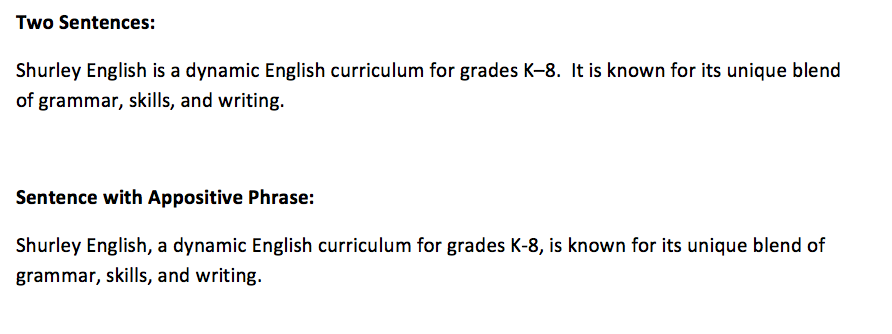What is an appositive?
/Appositives don’t have to be complicated. You just need to know (a) what they are, (b) how to punctuate them properly, and (c) how to use them to your advantage. When you understand these three things, you can use them any time they’re necessary in a competent and confident way.
First of all, an appositive is a noun or pronoun placed after another noun or pronoun to identify, rename, or explain it. It’s always located in apposition because it’s placed next to the noun or certain pronouns that it serves to develop.
In the first example, the appositive is set off by commas to indicate that the appositive is not essential to the basic meaning of the sentence. If we drop the appositive, the meaning of the sentence will not change.
In the second example, the appositive is not set off by commas because it is necessary to define the noun that came before it. This appositive can’t be dropped from the sentence without taking away a huge part of the sentences’ meaning.
When an appositive has its own modifiers, it is called an appositive phrase. Like other appositives, the appositive phrase acts as an adjective because it is describing a noun or certain pronouns in a sentence.
Appositives can be used to your advantage when you’re writing. Not only are they useful in identifying, renaming, and explaining other words, appositives make it possible for you to put more words into one sentence.






































































































